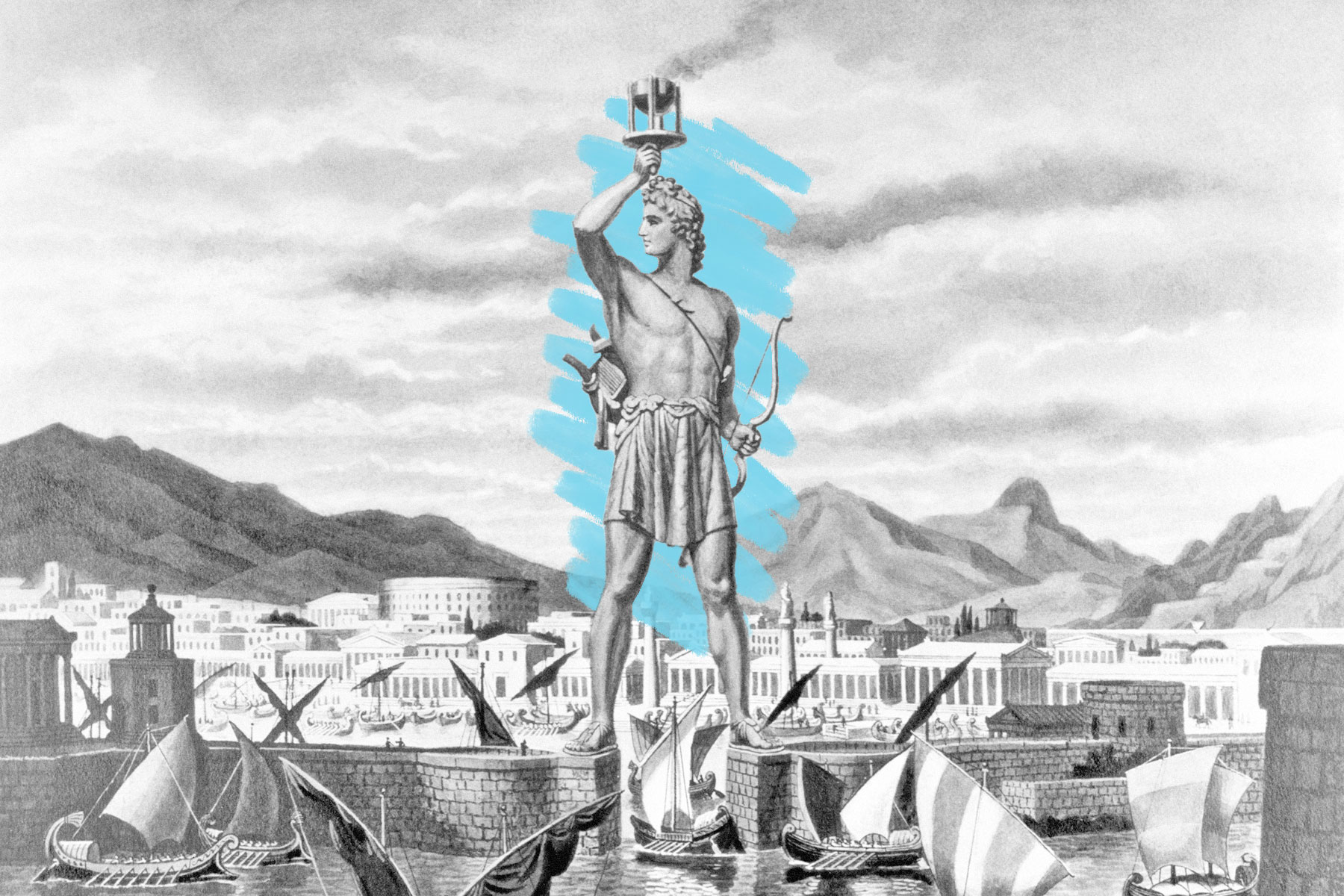The Colossus of Rhodes only stood for about 55 years.
Of the Seven Wonders of the Ancient World, the Colossus of Rhodes stood for the shortest period of time — roughly 55 years. Sources vary as to the exact number, but what’s certain is that the statue existed for a mere blip in the annals of history. (By comparison, the Great Pyramid of Giza has stood for more than 4,500 years.) The Colossus’ creation dates back to the siege of the Greek island of Rhodes in 305 BCE, when the Macedonian ruler Demetrius I led an ultimately futile attempt to capture the city and harbor. As his army abandoned its efforts the following year, they left behind their supplies and equipment, which the city later sold off for profit. With this unexpected windfall, Rhodian officials commissioned a celebratory statue of the Greek sun god Helios, the patron god of Rhodes.
Greek sculptor Chares of Lindos was tasked with building the colossal 108-foot-tall statue; he began around 292 BCE, and the work lasted for 12 years. Though the sculpture’s exact location is unknown, it’s believed to have stood on the harbor’s eastern side, and was likely made of iron and stone coated with bronze. The Colossus stood triumphantly for five decades, but it fell around 226 BCE when an earthquake struck the region and toppled the great wonder. Its remnants were scattered around until 654 CE, when invading Arabian forces gathered and sold what remained of the statue. There was so much debris that it’s said to have taken more than 900 camel loads to transport.







